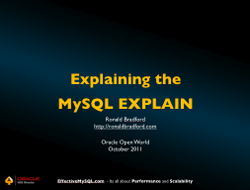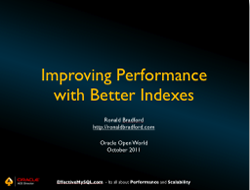

At Oracle Open World 2011 there has been a large number of MySQL presentations. You can download the slides of my two presentations at Explaining the MySQL Explain and Improving Performance with Better Indexes.
You can find additional supporting information for these presentations in the Effective MySQL: Optimizing SQL Statements book.
 Announced on Sunday at
Announced on Sunday at  I will be joining a stellar class of speakers at the
I will be joining a stellar class of speakers at the 